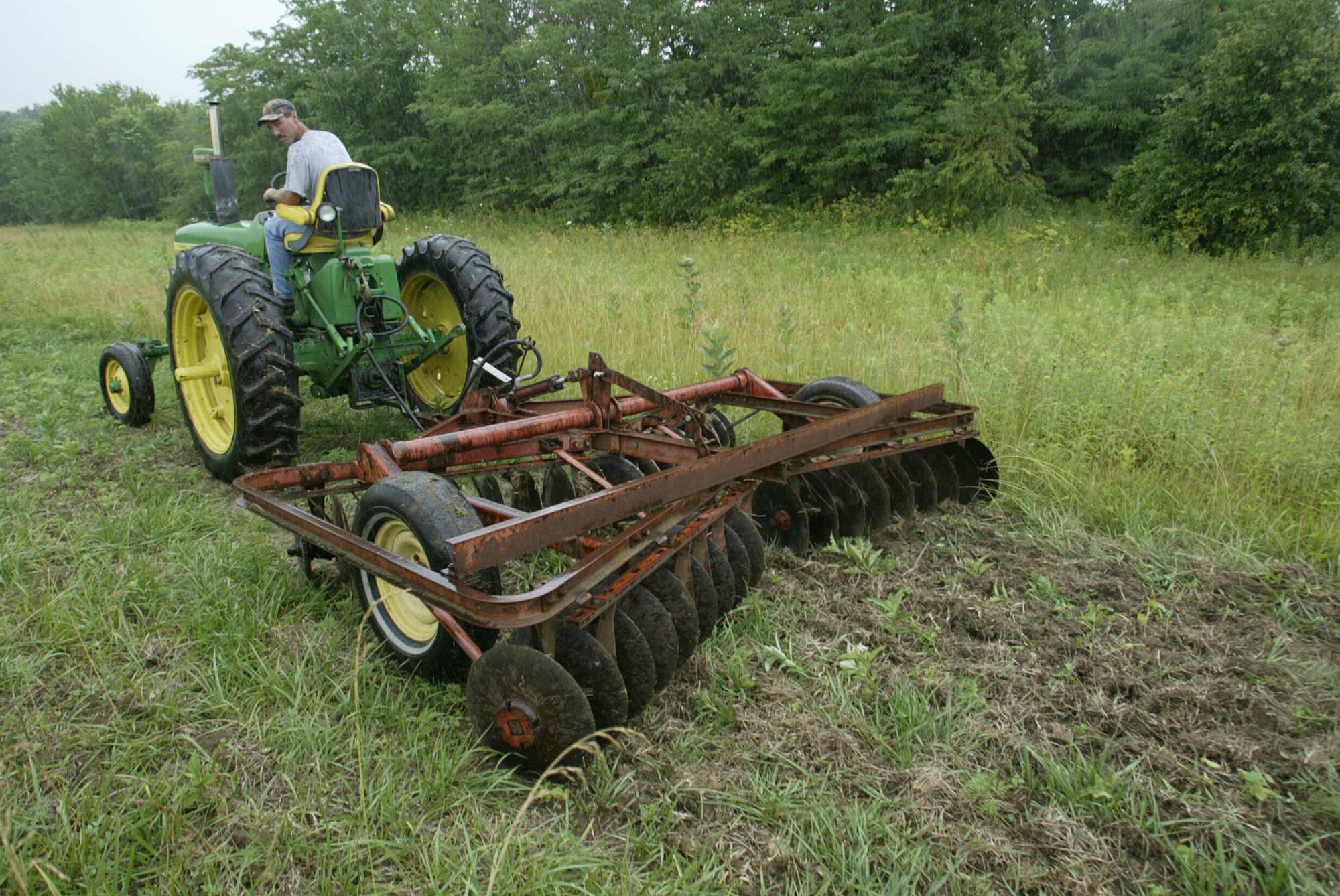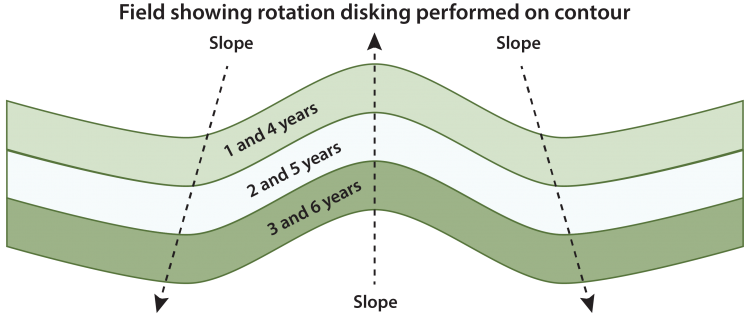Body
Light disking is an excellent way to enhance grassland habitat for bobwhite quail and other wildlife.
Light disking enhances habitat quality by
- releasing sod-bound grasses
- reducing residue
- creating bare ground
- increasing insect populations
- stimulating growth of desirable seed-producing plants
Media
Image

Is user submitted
Caption
Disking next to cover
Protect Prairies
Do not damage native prairie remnants with disking.
Body
This technique involves disking strips through a field on a three-year cycle.
- Strips should be 30 to 75 feet wide.
- Strips should be separated from each other by an area of undisturbed vegetation twice as wide as the disked strip.
- Disked strips should follow the contour of the field to prevent erosion.
- The disking should be 2 to 4 inches deep and leave 50 percent residue remaining on the ground surface.
- Disking should be done between Oct. 1 and March 30.
The disked areas will produce succulent forbs and legumes, which attract insects and produce abundant seed. The adjacent undisked areas will provide nesting and roosting cover.
Disking cycle
- One year after initial disking, disk a new strip of similar width in the adjacent, previously undisked area. Remember, the original undisked area was twice as wide as the disked strip. This will leave another undisked strip of equal width.
- Two years after initial disking, disk the remaining undisked strip.
Media
Image

Is user submitted
Caption
This disking cycle develops adjacent strips of vegetation of three different ages.





















